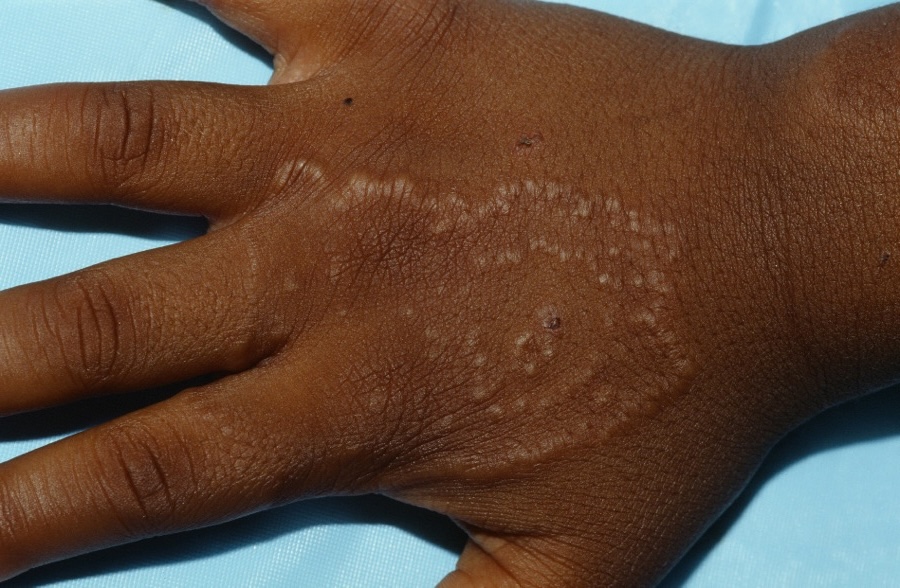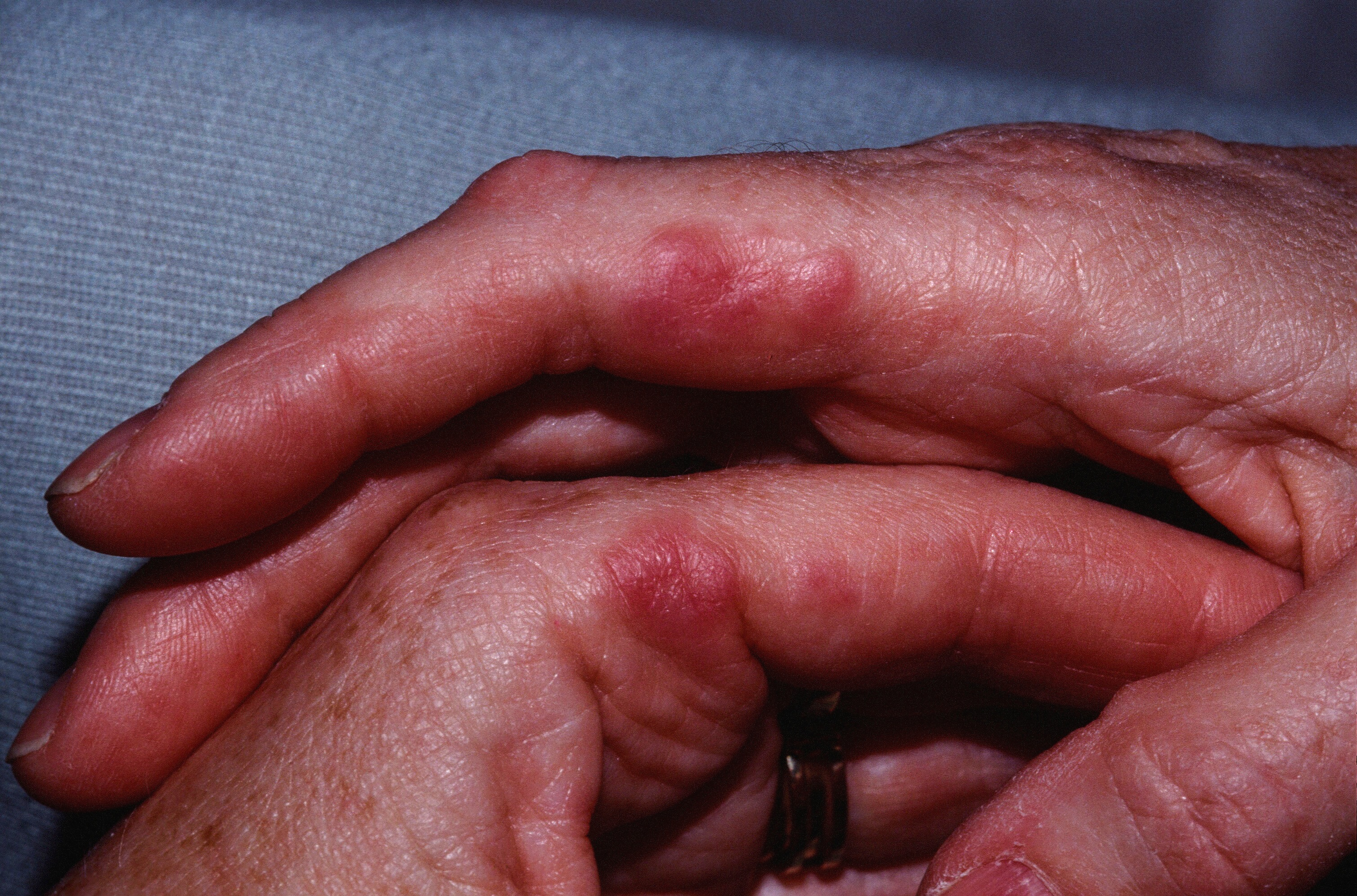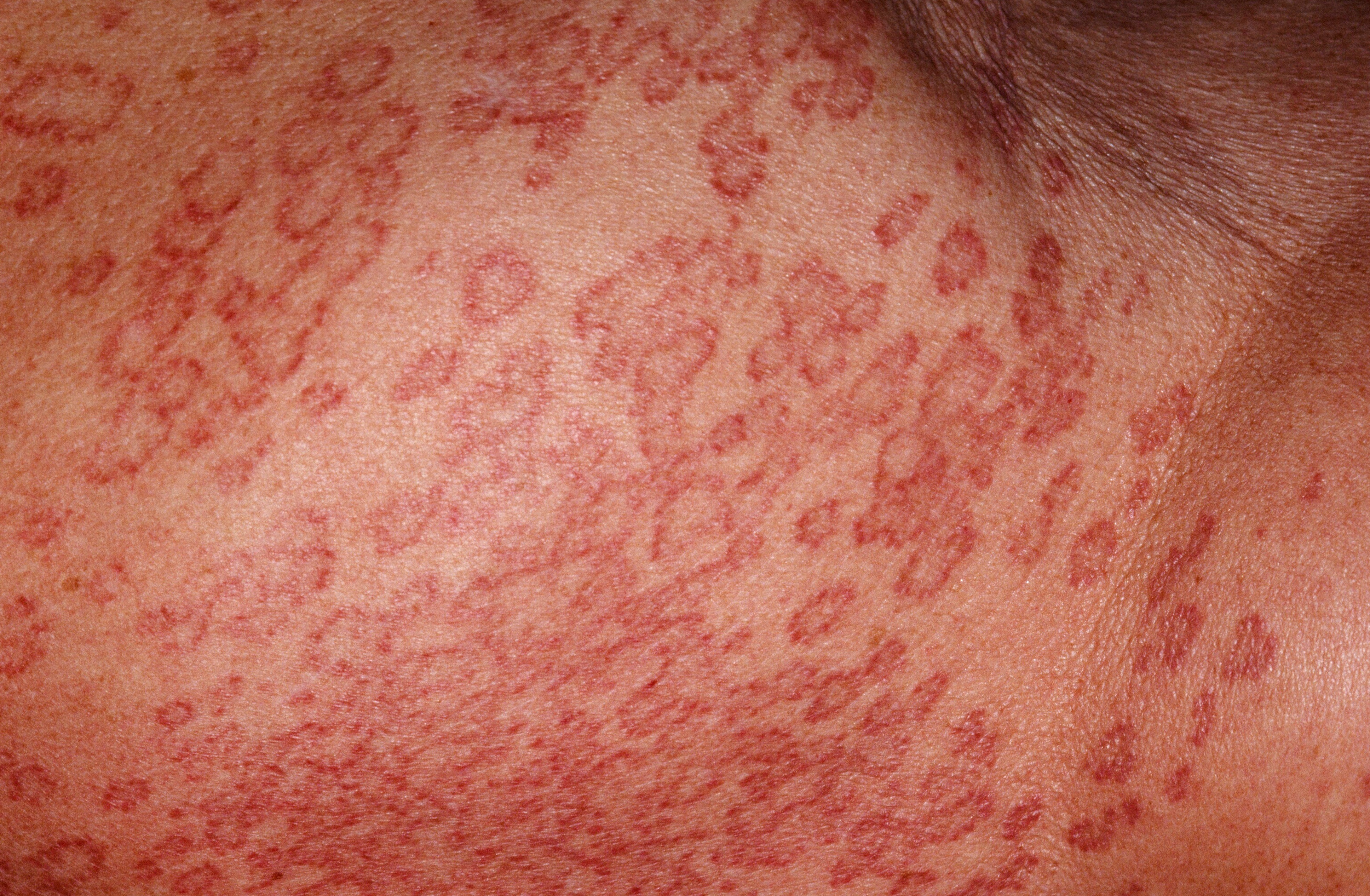
Dermal papules coallescing into linear lesions on the dorsal hand of a 10-year-old boy.

Dermal papules coallescing into linear lesions on the dorsal hand of a 10-year-old boy.
Granuloma Annulare (GA) is a benign, inflammatory, delayed hypersensitivity reaction in the skin to an as of yet unidentified antigen.
The common and localized form of GA usually presents as red, dermal papule forms and spreads outward involuting centrally. Later, multiple dermal papules linked together form spreading, annular rings. Localized GA is most common on the dorsa of the hands but lesions may occur elsewhere, e.g. the elbows, fingers, palms, dorsa of the feet, etc.
Nodular or subcutaneous GA presents as painless, firm subcutaneous nodules and occurs almost exclusively in children, usually on the legs.
Papular, umbilicated GA presents as umbilicated papules with a keratotic core. In the past, perforation was thought to occur, but this is rarely true.
A chronic, disseminated or generalized form may occur. It represents about 10% of overall cases of GA and is much more common in adults. Its response to therapy is poor and usually does not spontaneously remit. The morphology may be annular or papular. Rarely, this subtype is associated with hematologic malignancy.
GA, when thought of as a histologic pattern, may represent a variety of entities or disease processes. An acute and more widespread form may occur as an allergic reaction to a new medication. Drug-induced GA has been associate with a variety of medications including pegylated IFN-alpha, hepatitis B vaccination, infliximab, diclofenac, allopurinol and amlodipine. The time delay between start of the medication and presentation of the GA may be weeks to months.
A rare palmoplantar form occurs (see image below) and may present acutely. The diagnosis of palmar GA can be difficult owing to its atypical presentation. In a clinicopathological study of seven patients with biopsy proven GA exclusively on the palms, the diagnosis was not suspected clinically in five cases [Granuloma annulare on the palms: a clinicopathological study of seven cases. Ind J Dermatol, Venereol, 2012;78:468-74.
Annular Elastolytic Giant Cell Granuloma is considered by some a variant of GA as is Actinic Granuloma (photodistributed GA).
Although annular, there is no scale as seen in tinea_corporis. Any dermal infiltrative process might be considered (e.g. sarcoidosis).

A rare palmoplantar GA occurs and may present acutely as this case did.

A rare palmoplantar GA occurs and may present acutely.

Disseminated GA in an adult. While GA is generally a benign condition, in older adults, especially with atypical or widespread presentations, it can sometimes be associated with underlying malignancies, particularly hematologic ones, e.g. lymphoma, leukemia.
Who is Dr. White? | Privacy Policy | FAQs | Use of Images | Contact Dr. White